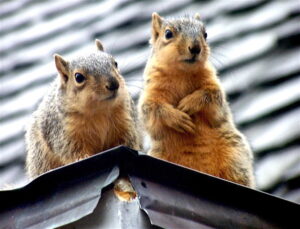What happens to injured Squirrels?
Contents

It’s common to see wild animals outside throughout spring, as a new generation makes its way into the world. Baby wild animals may look like they need our assistance, but unless the animal is genuinely orphaned or injured, there is no need to rescue them. Squirrel control company in Troy will only touch an animals out of necessity. These pointers can assist you to choose whether to do something about it.
Indications That a Wild Animal Needs Help
- The animal is given to you by a cat or dog.
- There’s evidence of bleeding.
- The animal has an evident or apparent broken limb.
- A bird is featherless or nearly featherless and on the ground.
- The animal is shivering.
- There’s a dead parent close by.
- The animal is crying and roaming all day.
If you see any of these indications, find help for the animal. If needed, securely capture and transfer them to an appropriate place for treatment.
Baby Squirrels
A squirrel who is nearly full-sized has a full and fluffy tail and can run, jump and climb up is independent. If a juvenile squirrel constantly approaches and follows individuals, their mother is probably gone. In this case, you must call a rehabilitator due to the fact that the infant is starving and needs care.
A Few Cases Where You May Need to Step In:
- A baby squirrel falls from a nest.
- A nest falls from a tree.
- A felled tree with an undamaged nest.
If the child and/or their nest fell from the tree, give the mother squirrel a chance to recover their young and transfer them to a brand-new nest. If the child is unscathed, leave them where they are, leave the area, keep people and pets away, and monitor them from a safe distance.
If it’s cold outside or the child isn’t completely furred, place them in a shoebox with something warm below (like a heating pad on a low setting or a warm water bottle). Make sure to put a flannel shirt in between the child and the heating device, or they could get too hot. Do not cover them with anything or the mom might not be able to discover them.
Finding Help for the Animal

When you’re sure the animal needs your help, call a wildlife rehabilitator for assistance. If you’re unable to find a rehabilitator, try contacting an animal shelter, humane society, animal control company, nature center, state wildlife company, or a veterinarian.
Capturing and Transferring the Animal
Never ever handle an adult animal without first seeking advice from a wildlife expert. Even small animals can injure you. Once you’ve called someone who can help, describe the animal and their physical condition as accurately as possible.
Unless you are told otherwise, here’s how you can make an animal more comfortable for transport while you’re waiting for aid to get come.
- Put the animal in a safe container. For bigger birds or other animals, use a cardboard box or comparable container. Put the animal in the box.
- Place on thick gloves and cover the animal with a towel or pillowcase as you scoop them up carefully and put them in the container.
- Do not offer the animal food or water. It could be the wrong food and cause them to choke, set off severe digestion problems, or cause aspiration pneumonia. Lots of hurt animals remain in shock and force-feeding can kill them.
- Place the container in a warm, dark, quiet place– far from pets, children, and all noise, until you can transport the animal. Keep the container away from direct sunlight, air conditioning, or heat.
- Transport the animal as soon as possible. Leave the radio off and keep talking to a minimum. Because wild animals aren’t accustomed to our voices, they can become really stressed by our sounds. If they’re hurt or orphaned, they’re already in a jeopardized condition. Keep their world dark and quiet to lower their tension level and help keep them alive.
Read More On
Baby Squirrels In The Attic